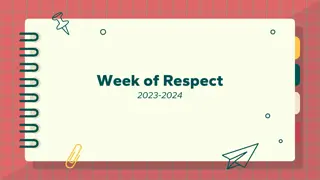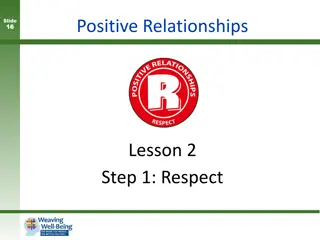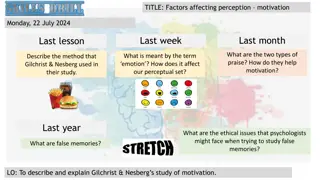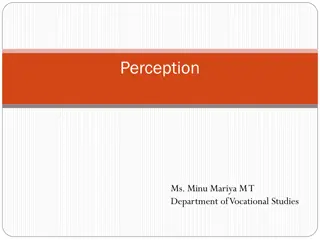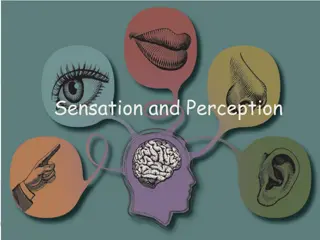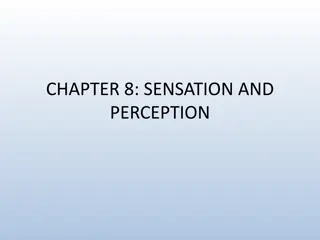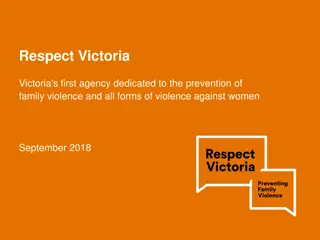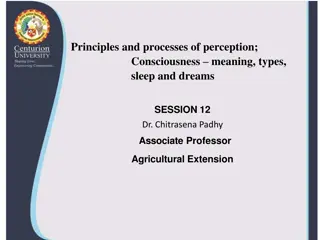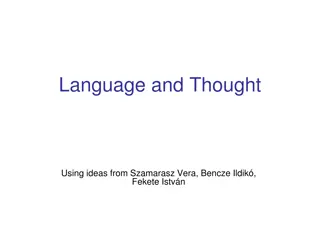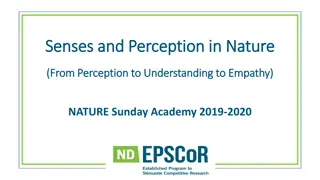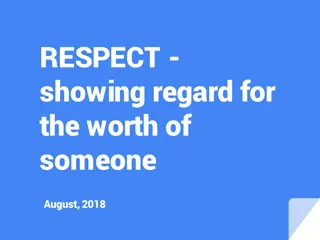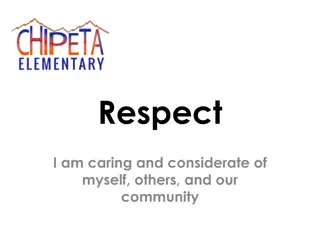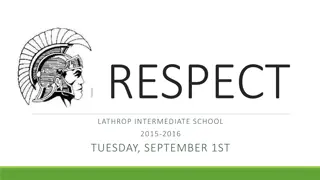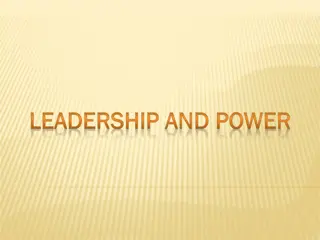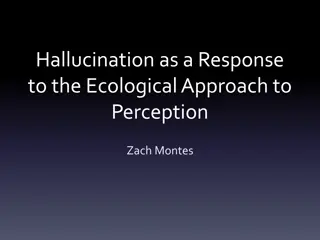The Power of Language: Shaping Perception and Fostering Respect
Our choice of language holds great influence in how we interact with others, particularly in professional settings like healthcare. Being mindful of our words can impact how we perceive individuals and the care they receive. Person-first language, respectful addressing of identities, and understanding the implications of our speech are crucial in creating an atmosphere of respect and acceptance.
Download Presentation

Please find below an Image/Link to download the presentation.
The content on the website is provided AS IS for your information and personal use only. It may not be sold, licensed, or shared on other websites without obtaining consent from the author. Download presentation by click this link. If you encounter any issues during the download, it is possible that the publisher has removed the file from their server.
E N D
Presentation Transcript
The Power of Language Thinking About How We Speak By Christina Lindsey, QMHA, PSS and Dee Conley, QMHA, PSS
Being Mindful of How We Speak Our words carry weight. Amongst ourselves as clinicians. Amongst participants. The things we say and how we say them, can have an effect on how we perceive participants and influence the care that they receive. Some language may seem innocuous but can be hurtful, or even harmful, to those around us.
Its Not Just Being Politically Correct The words we use have the power to show respect and make us feel respected. It can change how we think about things and helps to shape the way we view the world. Consider this: when Trans youth are addressed by their identified gender and name, their risk of suicide drops BY HALF (Russell et al. 2018).
Person-First Language Person-First Language removes the label and focuses on the person. It recognizes that people are multifaceted and hard to label. Sometimes, staying in a Person-First space can be difficult, since part of our job is using labels to identify behaviors and symptoms!
Label People-First Language Crazy/Psycho Insane/Lunatic ____ has a mental health condition/diagnosis. ____ has a lived experience of a mental health condition. Normal/Sane ____ doesn t have a mental health condition. Paranoid schizophrenic Anorexic Depressed Obsessive-compulsive ____ has paranoid schizophrenia. ____ has anorexia nervosa. ____ has major depression. ____ has obsessive-compulsive disorder. Emotionally disturbed ____ has a serious emotional disturbance. Special education student ____ is a student receiving special education services. Addict/Substance Abuser ____ has a substance abuse disorder. ____ has a lived experience of substance abuse. Mentally ill ____ has a mental health condition (or diagnosis). ____ has a lived experience of a mental health condition. (People First Language, n.d.)
Person-First Language does have its limitations, so use it as it feels right to you and with your participants. Ask people how they identify and what terms they prefer. What would you call that? Can I ask you for your name and pronouns? If you make a mistake it s okay! Apologize and correct yourself going forward. No need to fall on your sword . This moves the focus onto you and your feelings and away from the other person. What matters most is an atmosphere of respect!
Ableist Language Some commonly used language has ableist (as well as racist, xenophobic, classist, homophobic, and transphobic) roots. Some of these words have been called out and are slowly fading from use. Other words continue to be used and contribute to the overall oppression of marginalized groups. It may feel unnecessary, silly, or over the top to remove these words from your everyday use but doing so can have a profound effect.
Ableist Try This Instead Crazy, Insane Unreal, Unbelievable Psycho Jerk Dumb, Stupid Awful, Illogical, Bad Bipolar Moody, Fluctuating Retarded Ridiculous, Embarrassing Mental Case Eccentric Crippled Dismantled, Disabled/Disability Mad House Unruly, Unpredictable (Weird, K., 2015)
When We Dont Feel Comfortable Participant is nasty/creepy/bad/good/scary/weird/ foul. These words are very judgmental. Words like these DIRECTLY AFFECT how we may interact with someone. Everyone deserve compassion and to not feel as if they are being judged by staff. In addition, other participants may overhear this kind of language and it may damage their rapport with staff or their willingness to work with us on their recovery.
What About When Safety is at Risk? If there is a concern that someone may not be acting in a safe manner, it should be communicated in a clinically appropriate way. This can be done by putting the emphasis back on us as staff and how we are feeling. Person-First example, Participant has not been doing well lately. Their symptoms have increased and I do not feel safe visiting them alone.
Possessives My/Ours/Theirs/Yours or ANY possessive when referring to participants. This places participants on the same level of things, even if it is not intended. Possessive thinking can also deteriorate team cohesiveness and encourage Us vs. Them thinking. Person- First examples: I will/will not be seeing that person today. Jane usually meets with that participant and I do not. Is there something that I can do to help?
What Can We Do? vs What Can They Do? Many times, when a participant is in crisis, the immediate question is: How do we get through this? What do we do about this? How do we help them do this? It is NOTour role to fix things for our participants! Let s try and change the focus to How can we help support the participant through this issue?
Using Shorthand or Jargon It s a fact of the business, we all use shorthand. It can be an effective way of communicating amongst staff. However, it can sound very impersonal and even hurtful to those who are not familiar with our shorthand. A Person-First solution would to simply be mindful of who is in the room when using shorthand and make sure that all present are familiar with what is actually being said.
Addressing Problematic Language
Why Say Anything? Some people might honestly not realize that what they are saying is hurtful or harmful. It makes spaces safer for those who are not able (or not comfortable) to speak up. It changes the cultural norms and moves towards making that language no longer acceptable. No one is ever under any obligation to call out problematic language!
How to Address Problematic Language Make sure that you are in a safe space and that you feel comfortable calling out the language. Stay calm and focus on the behavior the problematic language and not the surrounding emotions. Keep your language collaborative and cooperative. This is something that you are all working on together!
How to Address Problematic Language Option One: Talk to the person at a later time, in private. I don t know if you realize but when you said thing they said, that kind of thing is not okay. Using those words is really problematic for these reasons. I think we can find a better way to describe those behaviors going forward.
Example: I don t know if you realize this but when you said earlier that A.B. is too lazy to do anything, that is not okay. Using those words is really ableist and makes it seem like we should all just give up. I think we can find a better way to describe what A.B. is doing that addresses their behaviors and can keep us all moving forward.
How to Address Problematic Language Option Two: Call it out in the moment. That is not okay. That is really hurtful. I think our participants deserve better than that. That is really ableist/racist/homophobic/ transphobic/classist/etc. I m not okay with our participants being talked about that way.
How to Address Problematic Language Option Three: Bring your concerns to your supervisor. Discuss with your supervisor what you are seeing and why you are concerned. Be prepared with specific examples. Have a plan for how the team can address problematic language. The team should be able to work together to find its own threshold of what language is okay and what is not okay.
Above All . . . . . . Be kind to each other! Working on an ACT team is a difficult job and frustrations can overwhelm all of us. The goal is not to become the word police but to set the expectation that kind, person-first, thoughtful language will be used.
Summary The language we use is important for a number of reasons. Person-first language is a good start to changing how we speak. Tips for changing ableist language. Examples of how to use more person- centered language. How to address problematic language.
References People First Language. (n.d.). Retrieved July 21, 2015, from https://tcdd.texas.gov/resources/people- first-language/ Russell, S.T. et al. (2018). Chosen Name Use is Linked to Reduced Depressive Symptoms, Suicidal Ideation, and Suicidal Behavior Amon Transgender Youth. Journal of Adolescent Health, 63 (4), 503-505. doi:10.1016/j.jadohealth.2018.02.003 Weird, K. (2015, June 10). How I Stopped and Learned to Remove Ableist Language from My Vocabulary[Web log post]. Retrieved May 2, 2019, from https://valprehension.com/2015/06/10/how-i- stopped-worrying-and-learned-to-remove- ableist-language-from-my-vocabulary/ Worrying

 undefined
undefined













